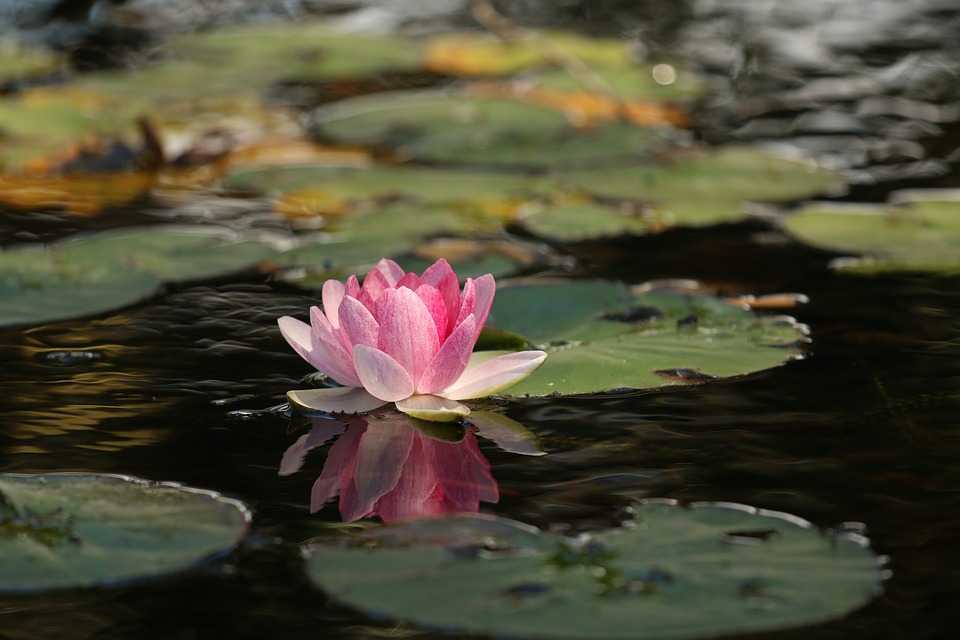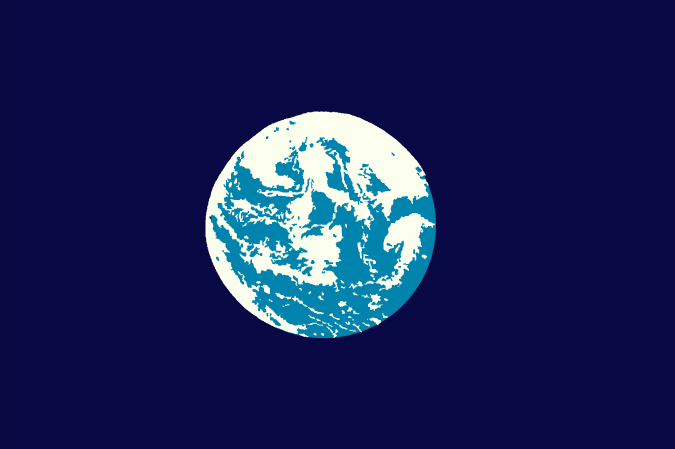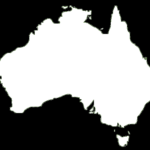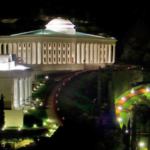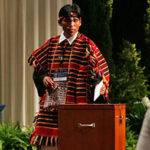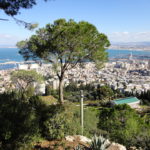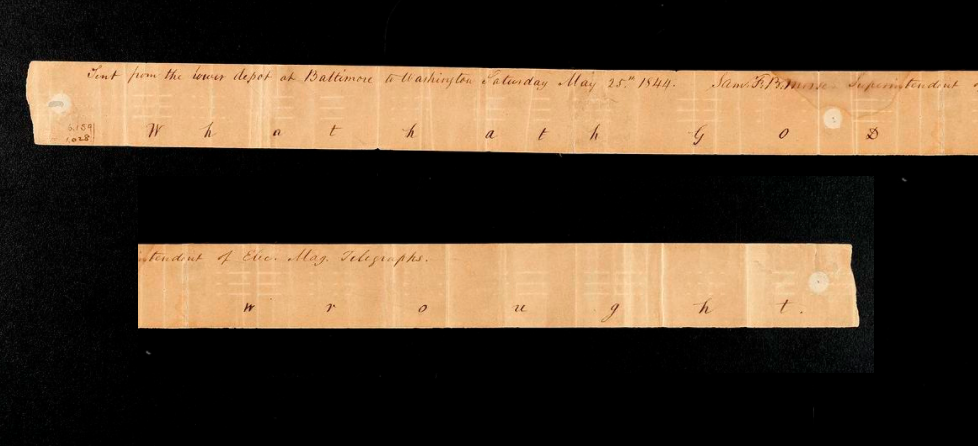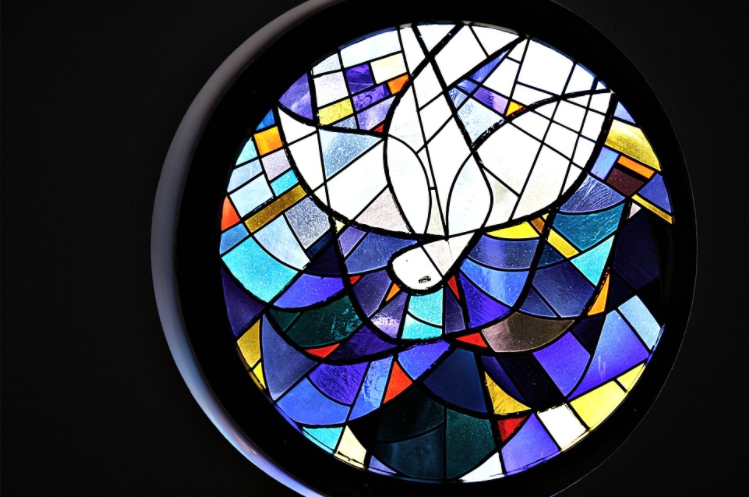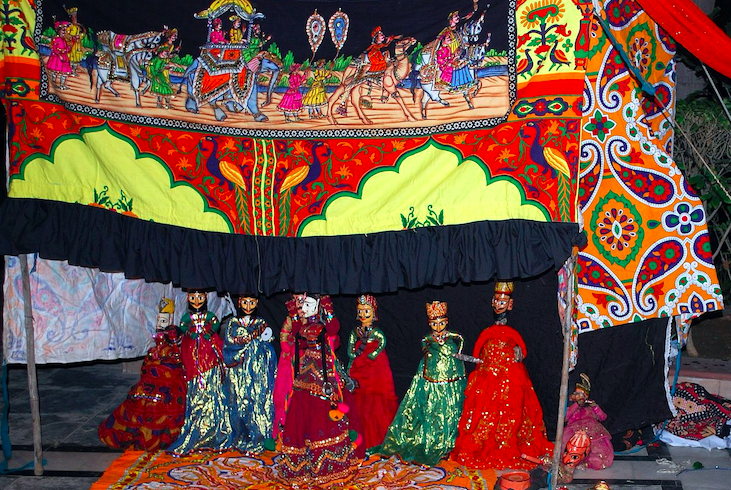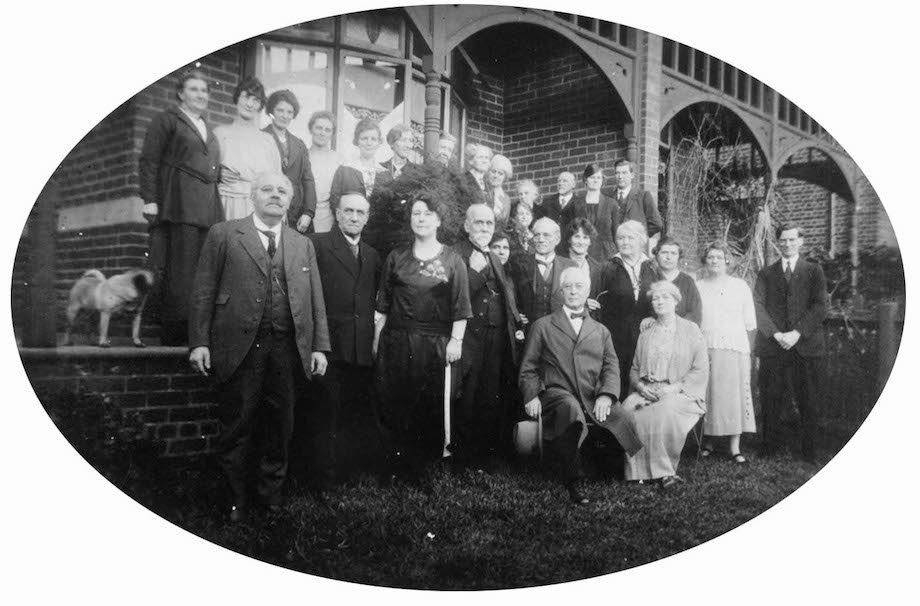
Clara and Hyde Dunn – the Baha’i Faith Comes to Australia
 On 10 April 1920, when Clara and Hyde Dunn arrived in Sydney, Australia was, to most of the world, a far-away place. To the bulk of Australia’s people it was a new nation seeking to unfold an egalitarian future that would be free of the many oppressions of the old world. Phrases like “fair go, mate” – though not so common nowadays – still capture something deep in the Australian ethos and sense of identity. It was to be a new society in which people could live a life of dignity, of freedom and of peace. In many ways this vision was a beautiful one. It was not always pursued.
On 10 April 1920, when Clara and Hyde Dunn arrived in Sydney, Australia was, to most of the world, a far-away place. To the bulk of Australia’s people it was a new nation seeking to unfold an egalitarian future that would be free of the many oppressions of the old world. Phrases like “fair go, mate” – though not so common nowadays – still capture something deep in the Australian ethos and sense of identity. It was to be a new society in which people could live a life of dignity, of freedom and of peace. In many ways this vision was a beautiful one. It was not always pursued.
It has had its imperfections, like all human projects. Yet it was taken up again and again in Australian history. Its most glaring shortcoming, for many decades, was that it excluded anyone who was not white, indeed anyone who was not “British”. Australia’s original inhabitants were on the margins of this society – and no future was seen for them. Asians and Pacific Islanders were excluded. Yet with time, the egalitarian ethos deep in the heart of Australia ensured that the circle was drawn wider and these racial exclusions, if not yet entirely so, have largely fallen away. There will always be more work to do.
Clara and Hyde Dunn, although from the other side of the world, would find it easier than most to find a place in this society. In 1919, when they decided to set out for Australia, they had both already lived a long life. They were living in the United States, but both were from the “old country” by background. Clara was born in London in 1869 of an Irish couple from Dublin. Hyde Dunn was also born in London in 1855. Both came to America where they eventually met, through a shared interest in the new faith – the teachings of Bahá’u’lláh. Except for the faith they carried in their hearts, which would certainly be considered exotic by many in the Australian context, they would by and large fit right in in Australia: a society which had designed itself to receive exactly such new arrivals.
Clara’s early life had been not been easy. She had lost her first husband, and due to poverty was compelled to give her only child to relatives to be raised, a pain that stayed with her for the rest of her life. Both Clara and Hyde were present in San Francisco and met Abdu’l Baha, during his visit there in 1912. Hyde Dunn also lost his first wife in 1916. In 1917, Hyde and Clara married. It was World War 1, and they were already approaching the evening of their lives. Hyde was about 62 years of age, Clara was about 48.
A passage from Abdu’l Baha’s letters had described what is presumably World War 1 in all too tragic terms.
Ye observe how the world is divided against itself, how many a land is red with blood and its very dust is caked with human gore. The fires of conflict have blazed so high that never in early times, not in the Middle Ages, not in recent centuries hath there ever been such a hideous war, a war that is even as millstones, taking for grain the skulls of men. Nay, even worse, for flourishing countries have been reduced to rubble, cities have been leveled with the ground, and many a once prosperous village hath been turned into ruin. Fathers have lost their sons, and sons their fathers. Mothers have wept away their hearts over dead children. Children have been orphaned, women left to wander, vagrants without a home. From every aspect, humankind hath sunken low. Loud are the piercing cries of fatherless children; loud the mothers’ anguished voices, reaching to the skies. And the breeding ground of all these tragedies is prejudice: prejudice of race and nation, of religion, of political opinion;[1]
During the madness of that war, Abdu’l Baha was a “stranger in a strange land”. Communication was for a time cut off with his followers in the West. He had prepared for the consequences of war by ensuring grain was grown and stored by Baha’i farmers in the Galilee. During the war Abdu’l Baha distributed it to the people of Akka and Haifa. It saved the people from starvation. He was later knighted for this humanitarian service.
Abdu’l Baha was at the same time storing seeds of another kind: spiritual seeds. These spiritual seeds he stored in letters he wrote to his followers in America. They are collectively known as the “Tablets of the Divine Plan“. They could not be sent until after the war.
The metaphor of seeds is apt, as Abdu’l Baha uses it himself in these letters.
Now you must become heavenly farmers and scatter pure seeds in the prepared soil. The harvest of every other seed is limited, but the bounty and the blessing of the seed of the divine teachings is unlimited. Throughout the coming centuries and cycles many harvests will be gathered. … It has often happened that one blessed soul has become the cause of the guidance of a nation. Now we must not consider our ability and capacity, nay, rather, we must fix our gaze upon the favors and bounties of God, in these days, Who has made of the drop a sea, and of the atom a sun.[1]
At first the letters called on the Baha’is to spread out and settle in new centres in America. Eventually however the call came to spread out everywhere in the world. Abdu’l Baha wrote:
O that I could travel, even though on foot and in the utmost poverty, to these regions, and, raising the call of “Yá Bahá’u’l-Abhá” in cities, villages, mountains, deserts and oceans, promote the divine teachings! This, alas, I cannot do. How intensely I deplore it! Please God, ye may achieve it.
At this time, in the Hawaiian Islands, through the efforts of Miss Alexander, a number of souls have reached the shore of the sea of faith! Consider ye, what happiness, what joy is this! I declare by the Lord of Hosts that had this respected daughter founded an empire, that empire would not have been so great! For this sovereignty is eternal sovereignty and this glory is everlasting glory.
Likewise, if some teachers go to other islands and other parts, such as the continent of Australia, New Zealand, Tasmania, also to Japan, Asiatic Russia, Korea, French Indochina, Siam, Straits Settlements, India, Ceylon and Afghanistan, most great results will be forthcoming. How good would it be were there any possibility of a commission composed of men and women, to travel together through China and Japan—so that this bond of love may become strengthened, and through this going and coming they may establish the oneness of the world of humanity, summon the people to the Kingdom of God and spread the teachings.[2]
In 1919, when the letters finally arrived in America, Clara and Hyde Dunn immediately responded. Despite their advanced years, and their limited financial resources, after writing to Abdu’l Baha, they set out for Australia arriving in 1920.
Hyde Dunn worked as a travelling salesman, an employment that enabled him to visit innumerable centres in Australia, as well as New Zealand and Norfolk Island. Clara supported his work, often travelling with him, and helping organise Baha’i meetings. By 1922, the first two Australians, Oswald Whittaker and Effie Baker, had become Baha’is. We have already met Effie in her journeys through Iran, compiling a photographic archive of the birth of the Baha’i Faith. Martha Root, that indefatigable world traveller, visited Australia and New Zealand in the early 20’s, strengthening the growth of the fledgling Baha’i community. By 1922, Shoghi Effendi, wrote to Baha’is in Australia. He had only recently himself taken up the role of Guardian of the Baha’i Faith.
20 December 1922
To the Bahá’ís of Australia
My dearest co-workers in that distant land:-
How great was my joy to learn that in that far-away continent, remote from the turmoil and restlessness of a weary world, the Voice of God has been raised and proclaimed and has attracted such a promising number of ardent and faithful lovers of Bahá’u’lláh!
I offer you my heartfelt love and sympathy and the assurance of my unfailing assistance in the great work of service to mankind which is now so gloriously unfolding itself to your eyes.
I have shared fully your news with those loving pilgrims and resident friends in the Holy Land whom I meet regularly in what was in the past the audience-chamber of the Master and who thirst after the tidings of the progress of the Cause in every land. They, and myself with them, will pray most fervently for every one of you that the seeds of faith and loving fellowship that you are casting in the soil of hearts may germinate and swell the ever increasing number of the valiant hosts of Bahá and enable them to attain glorious victory.
I shall await with eager expectation the welcome news of the extension of your activities, the widening of your correspondence with the various spiritual centres throughout the world, the plans you contemplate for the spreading of the Movement and the means you will utilise for their speedy execution. On my part I shall never neglect to send you such news as will urge you to press forward your great work for the Cause and hearten you in your labours of love and devotion at His Sacred Threshold.
Your brother in His Service, Shoghi
From their arrival in Australia, Hyde and Clara’s lives were devoted to service to the new Baha’i community they had nourished to fruition. By 1934 the Baha’i Faith had progressed sufficiently that a National Spiritual Assembly for the Baha’is of Australia and New Zealand could be elected, one of the first in the world.
In 1941, Hyde Dunn passed away. In 1952, Shoghi Effendi recognised his life of service by his posthumous appointment as a “Hand of the Cause of God”. At the same time, Clara, who was still living, was also appointed to the same rank. In this role, she was one of the Faithful Stewards of the Baha’i Faith whose work ensured the completion of the plans of Shoghi Effendi and the election of the Universal House of Justice provided for in Baha’u’llah’s writing. In 1958 Clara Dunn laid the foundation stone of the mother temple of Australasia in Sydney.
The early years of the Baha’i Faith in Australia is reflected on by Dr Peter Khan, in his introduction to the collected letters of Shoghi Effendi to Australia and New Zealand (Messages to the Antipodes). The reflection is illuminating.
One might inquire how a new belief originating in an Asian setting, promulgated by a small handful of adherents of limited means and modest social standing, could have been spread far and wide across so vast a region of the planet as that of Australia and the Pacific Islands, at a time when the general population displayed no predisposition to embrace a faith other than orthodox Christianity and no discernible inclination to assess the relative merits of the great religions of the world. …
The significance of the events referred to in this book might best be assessed against the background of the evolution of Australian national consciousness during the years in which the letters were written, since so much of the correspondence was directed principally to Australia. In a newly-federated nation, searching for its identity, acutely conscious of its isolation from its European cultural roots and of its proximity to Asia, the Bahá’ís established centres of world-mindedness, of universality and of international cooperation, symbolized by such actions as the monetary contributions made by the fledgling community to global Bahá’í endeavours of earthquake relief in Asia and of construction of the Mother-Temple of the American continent.
The members of the Australian and New Zealand Bahá’í communities are shown, on the evidence of the letters addressed to them by Shoghi Effendi, to have represented, in many ways, the best of the character and temperament of those nations. Over the years, he called attention to “the loyalty, the vigour and the devotion” with which they conducted their affairs, expressed his “admiration for their zeal and noble determination”, hailed “the solidarity and self-sacrifice, the courage and confidence they display in their incessant and manifold activities”, and lauded “the vitality and adventurous spirit the members of these communities have so strikingly manifested”. In a society which was male-oriented to an extreme, Bahá’í women played a courageous and disproportionate role as pioneers, teachers and administrators of the Faith. Disregarding the prevailing tendencies to assign little value to the indigenous peoples, the Bahá’ís attached importance to attracting to their Cause as brothers and sisters the aboriginal Australians and the Maori New Zealanders, thus contributing to the upliftment of the peoples and to their enlistment in the world-wide endeavour of spiritual regeneration of humanity.
The seeds that Clara and Hyde Dunn helped Abdu’l Baha plant continue to bear fruit.There is much more about Clara and Hyde’s lives that has not been mentioned above. Their lives are beautifully told in the selected sources linked below, which have been drawn on in preparing this article.
Selected Sources:
Clara Dunn – A Spiritual Pioneer, Michael Day, 2010
Dunn, Clara and Hyde, Graham Hassall, 2000
Dunn, Clara (1869–1960), and Dunn, John Henry Hyde (c. 1855–1941), Graham Hassall, 2009
Messages to the Antipodes – Communications from Shoghi Effendi to the Baha’i Communities of Australasia, edited by Graham Hassall, 1997
Image Credits: Clara and Hyde Dunn at a Baha’i meeting in Australia in the 1920s. They are seated, front right. Seventy Five Years of the Baha’i Faith in Victoria, Graham Hassall, 1998-2012
(This article is the 109th in a series of what I hope will be 200 articles in 200 days for the 200th anniversary of the birth of Bahá’u’lláh. The anniversary is being celebrated around the world on 21 and 22 October 2017, The articles are simply my personal reflections on Bahá’u’lláh’s life and work. Any errors or inadequacies in these articles are solely my responsibility.)
